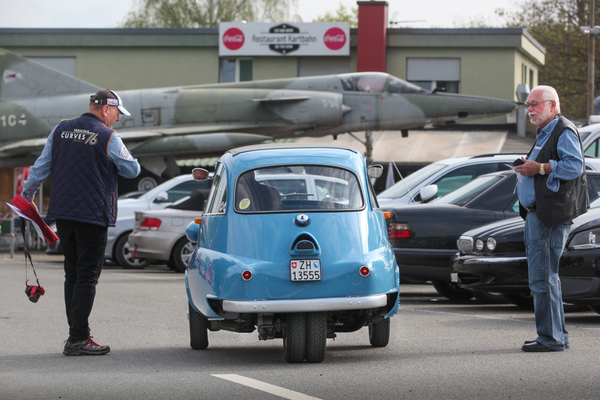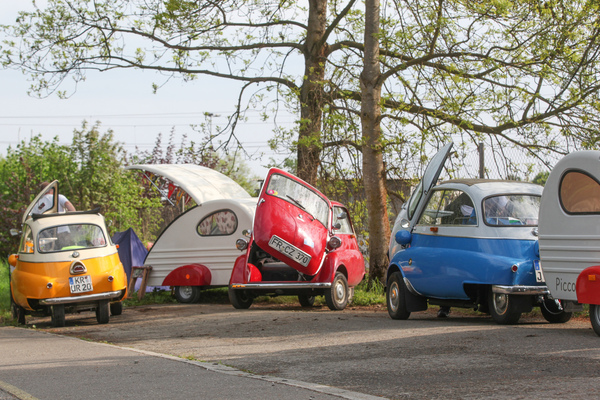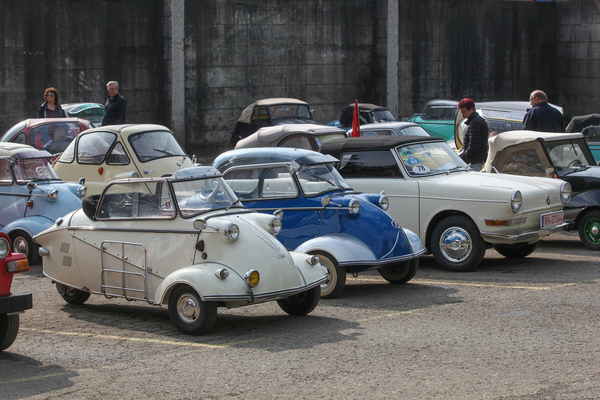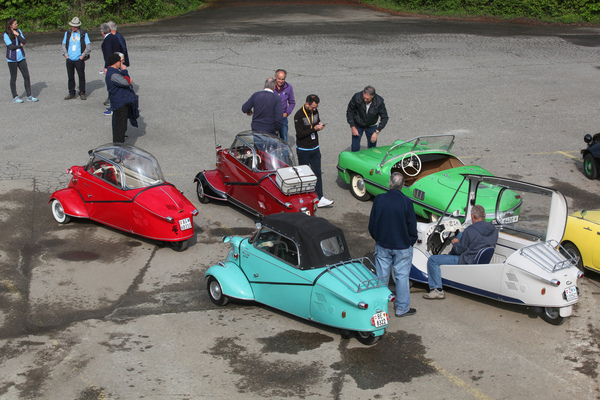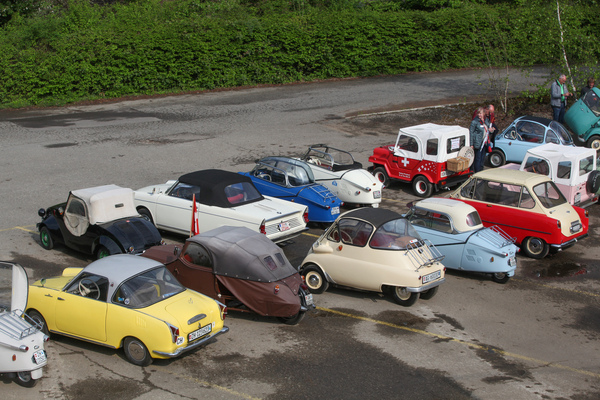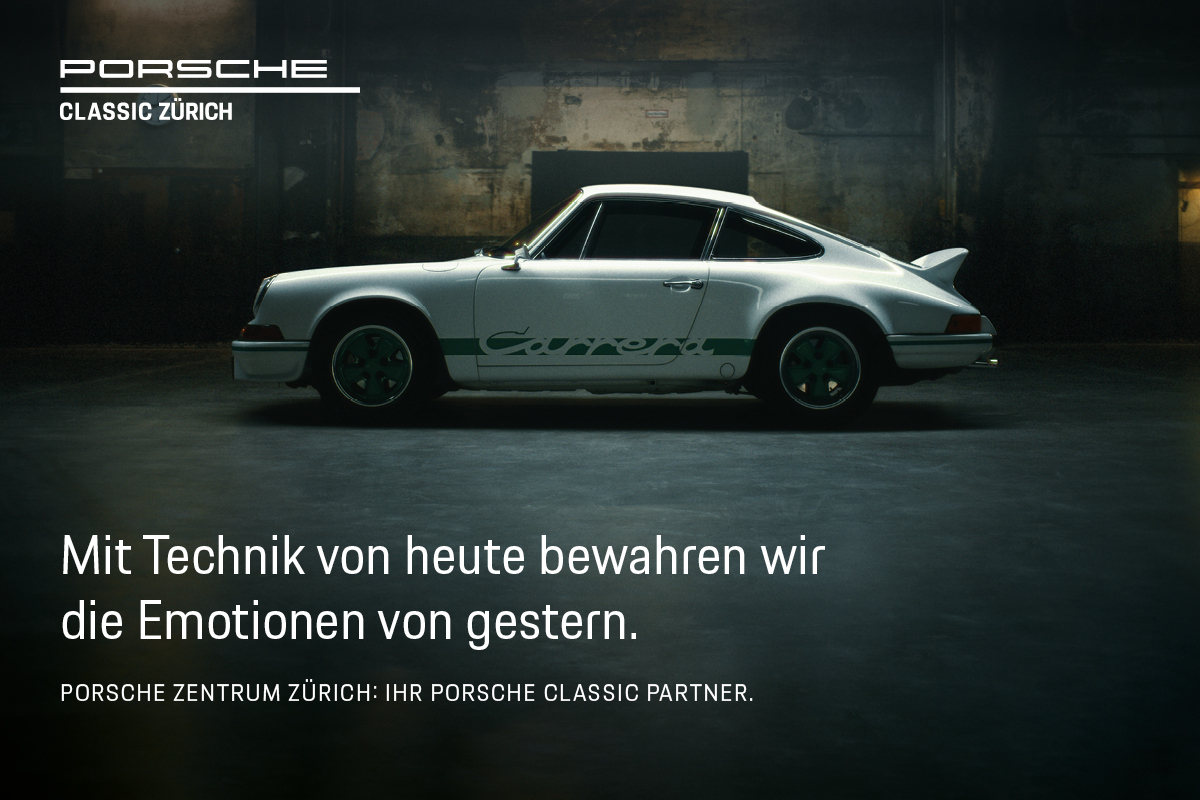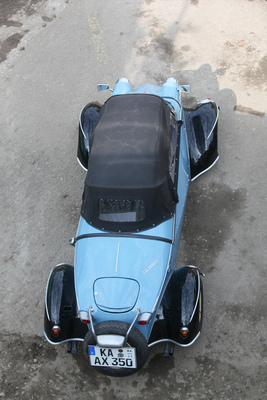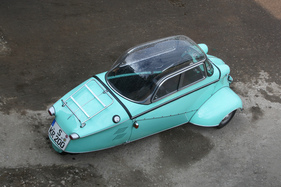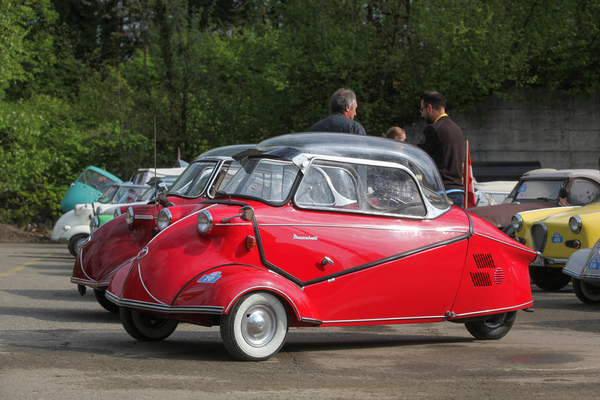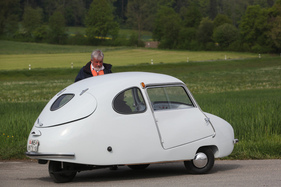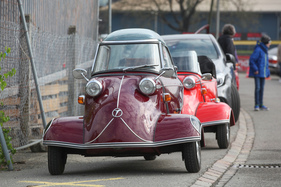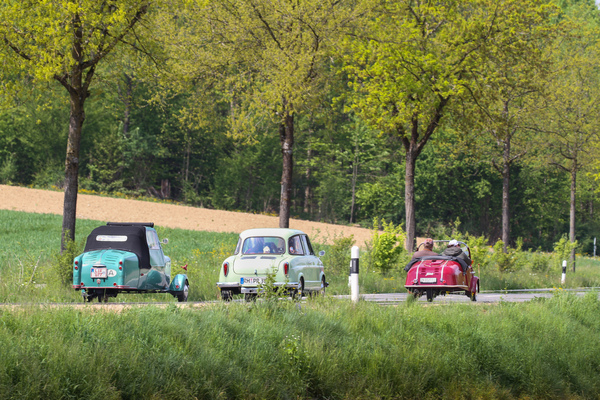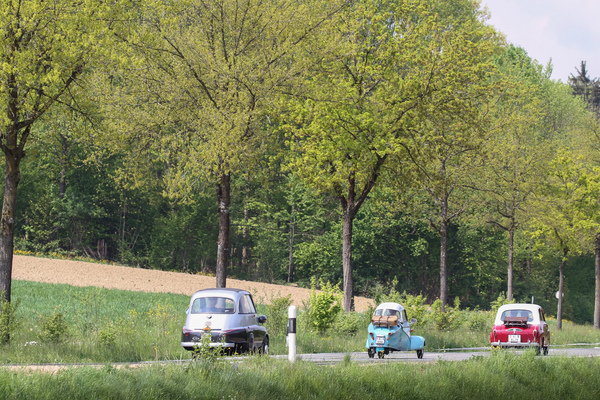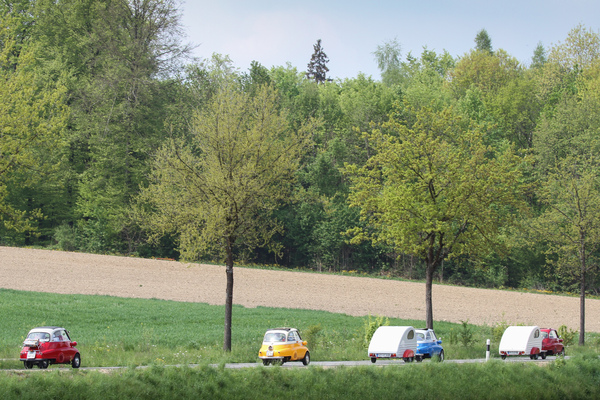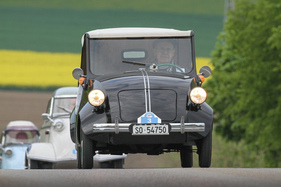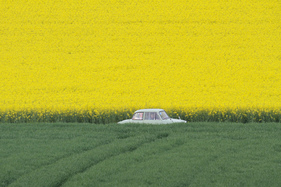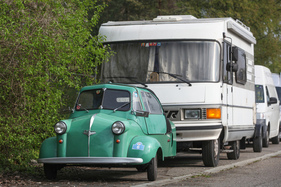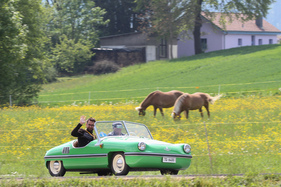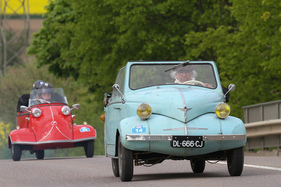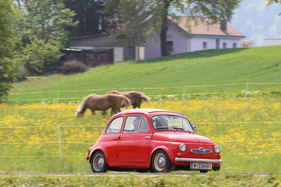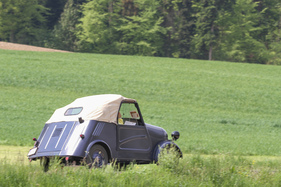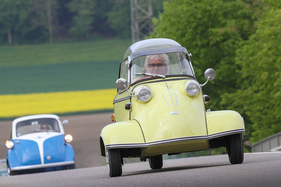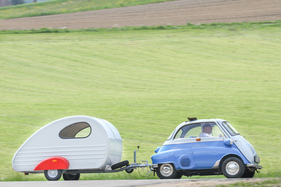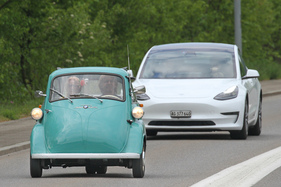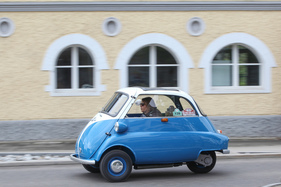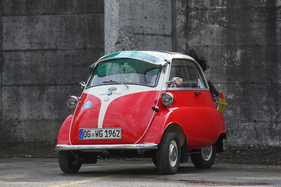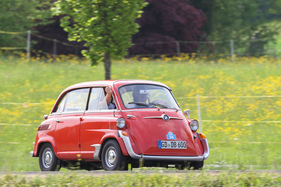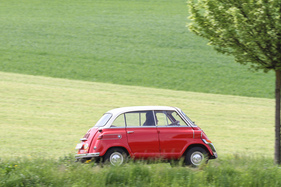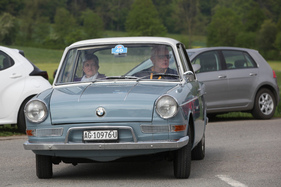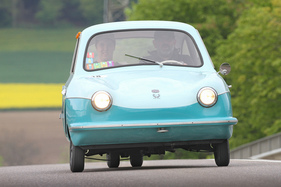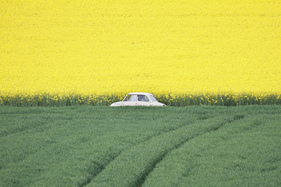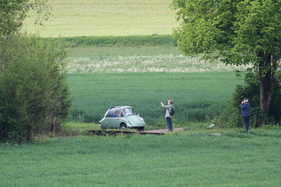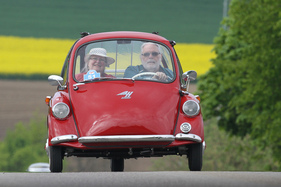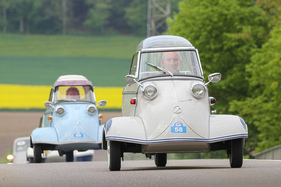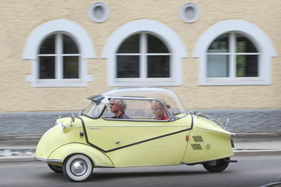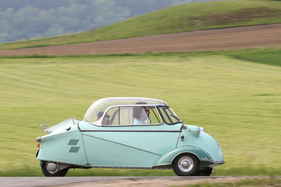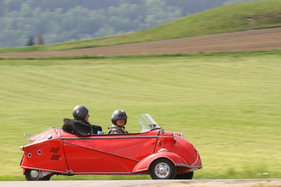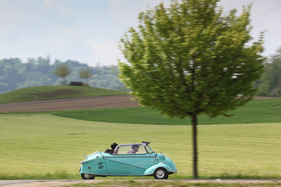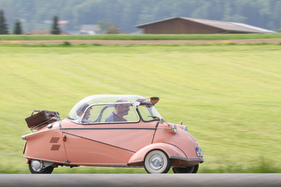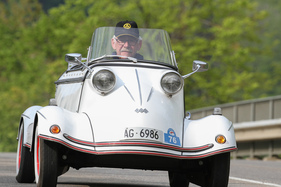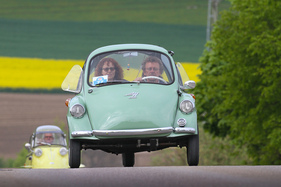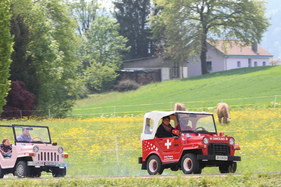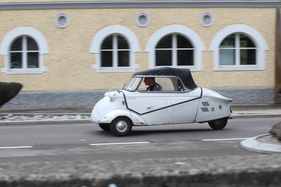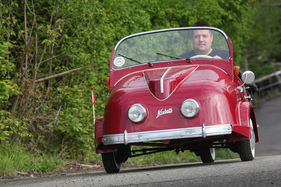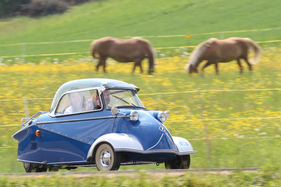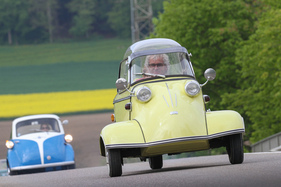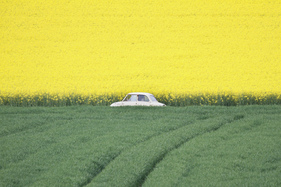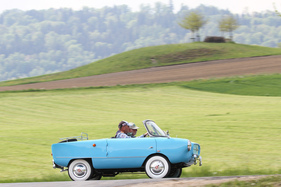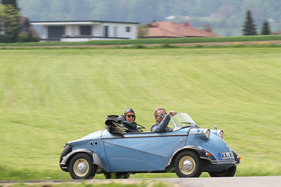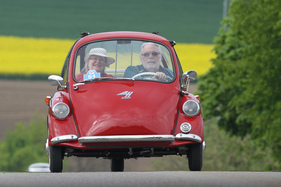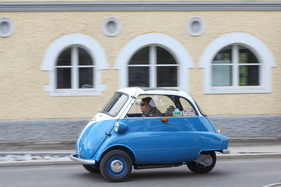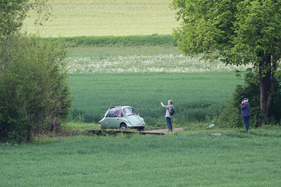The small car meetings in Switzerland have long been a tradition. A large international gathering should have taken place again in 2022, but because the planned festival grounds were not available, the event had to be scaled down and reduced to 75 participating vehicles.

The "Light" meeting primarily invited cars up to a maximum length of three meters and a maximum displacement of 500 cm3, which had also been built before 1975. However, some exceptions were granted, which was definitely conducive to the colorful mix. But more about that later.
Rarities and popular
The microcar cosmos is extensive, and in the post-war years and up to around the end of the 1960s, a large number of miniature vehicles were created. The aim of their designers was to combine the maintenance costs of a motorcycle with the advantages of a passenger car (weather protection, trunk space, etc.). The result was a wide variety of three- and four-wheeled vehicles as well as a kind of mixture of the two (closely spaced rear wheels without differential). Passengers sat next to or behind each other. There were small cars with or without a fixed roof. Two cylinders were almost a luxury; often a single cylinder had to provide all the propulsion, and an air-cooled one at that.
The fact that the cars were small and their performance tended towards the leisurely side did not prevent owners from traveling longer distances. They drove the small BMW 600 to the Adriatic or the Heinkel cabin almost as far as the North Cape back then. Fuel consumption was kept within limits and there was always room for a tent and some luggage, if necessary strapped to the rear or the roof. The main thing was that you could drive out into the wide world and discover new things.
A lot of time has passed since then. Most manufacturers had to give up at some point, but BMW continued to build the Goggomobil with glass until June 30, 1969. The former buyers of the Fuldamobil, Messerschmitt or Zündapp Janus had become more demanding and were now driving Beetles or Opel Rekord. An era ended, the small cars were forgotten. Almost, anyway.
Collectors began to rediscover these contemporary witnesses of the economic miracle years, enthusiasts restored the microcars that had survived in a corner of the garage, a shed behind the house or at the car recycler. And at some point, the microcars appeared at major auctions and were sold at high prices. An FMR Tg 500 (Tiger) suddenly fetched more than a Ferrari or Porsche. And even a BMW Isetta built in its thousands fetches higher prices today than a Rolls-Royce Silver Shadow.

A topsy-turvy world? Perhaps, but anyone who stood by the road at the microcar meeting in Wohlen from April 29 to May 1, 2022, as the convoy or individual participants rolled past, could well understand the fascination for the small and oh-so-cute vehicles. They are simply adorable, these little balls and ground-going almost-planes, the occupants seem to be having endless fun and even the sun didn't want to hide from the show.
Largely lucky with the weather
The weather forecasts for the event were suboptimal, with rain and cloudy days predicted. But the weather was kind.
Although it rained a few times, both the rally on Saturday and the anniversary drive on Sunday were able to take place in (almost) dry conditions, which was also appreciated by the public on the road and in the "pit" at the Wohlen go-kart track. On Sunday, more than 300 people were on the square at times to admire the cute little cars.
Impressive variety of vehicles
The just over 75 microcars entered covered a wide spectrum of the manufacturer landscape at the time.

As expected, the small Messerschmitt KR 200 and the BMW Isetta dominated the scene, but of course the Heinkel cabs and the Glas Goggomobil were also represented.
Among the rarer exponents of the microcar scene were the Fuldamobil, the Zündapp Janus, the Rovin D2 and the Felber Autoreller as well as the Kroboth all-weather scooter, the Spatz 200, the Victoria 250, the SMZ S3A, the Julien MM5 and the Frisky. These were joined by the BMW 600, BMW 700, a Lloyd and two Diavolino from the 1980s. Of course, the fast FMR Tg 500 (Tiger) should not be forgotten in this list.
One or two participants had to swap vehicles at short notice due to technical problems on the one hand and the feared bad weather on the other.

It was truly a colorful crowd that shone in the sun in the most beautiful pastel but also bright colors in the pit of Wohlen. And on Saturday and Sunday, the cars were also driven, so that the public in the vicinity of the meeting could also enjoy the popular small cars.
The rally on Saturday lasted around five hours and took the participants on smaller and larger roads through Waltenschwil, Unterlunkhofen, Bremgarten, Stetten, Mellingen, Lupfig, Möriken, Dottikon, Meisterschwanden, etc., while on Sunday the rally swung out in a more southerly direction and headed for Samenstorf, Dottikon and Muri, among other places.
No worries about the next generation?
Of course, there were also many grey-haired people in Messerschmitt, Isetta, Heinkel and the like, but the average age of the scooter drivers and especially the co-drivers was probably significantly lower than at other classic car events. Or was the impression deceptive?
In any case, you could see younger people behind the wheel, but also in some of the passenger seats, who were having a lot of fun and energy. That's good! It seems that the next generation is assured, at least for the cabin scooter.
However, the fact that some event participants brought their beloved cabin scooters to Wohlen on a trailer rather than on axles also shows that these microcars are now cherished vehicles that hardly anyone wants to use in everyday life. A pity, really, because even during the week, a blue and white Isetta or a red Heinkel cab could put a smile on the face of many a passer-by ...

